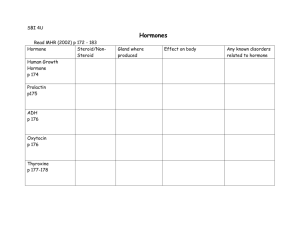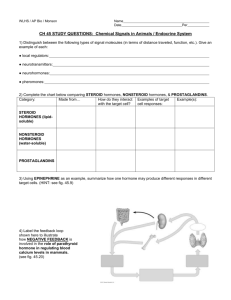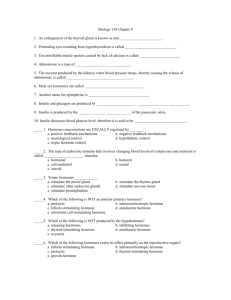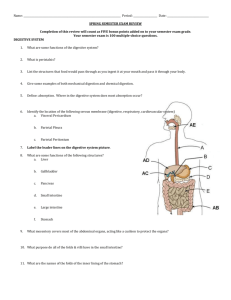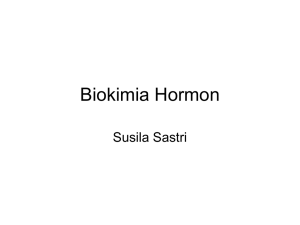Components of the Endocrine System
advertisement
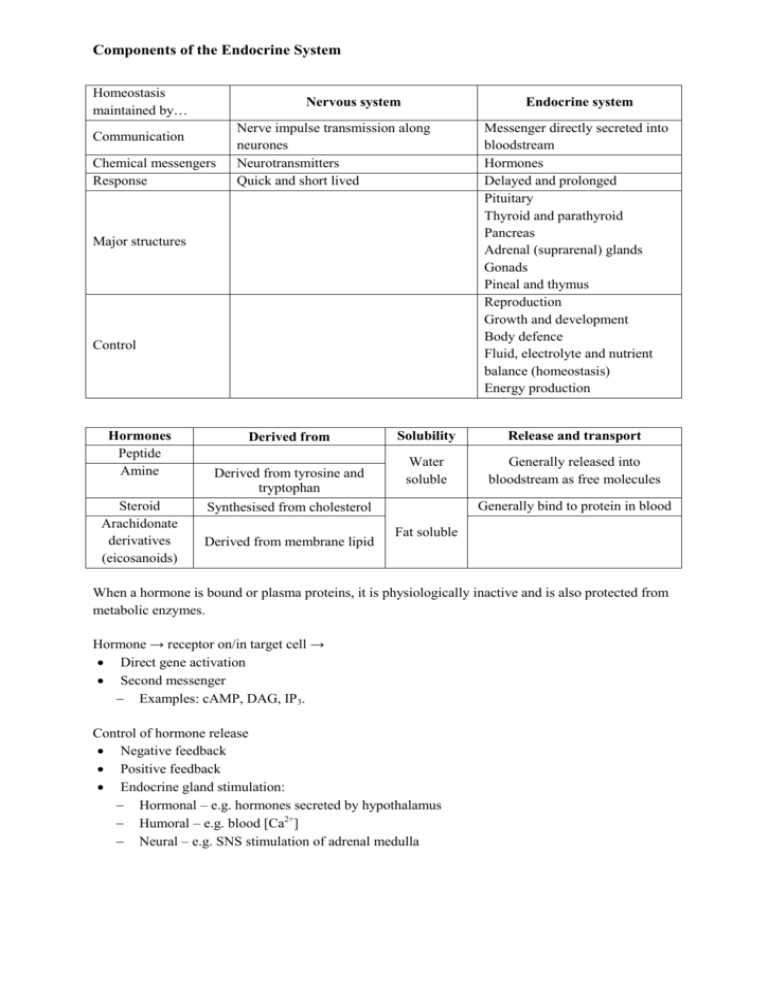
Components of the Endocrine System Homeostasis maintained by… Nervous system Communication Chemical messengers Response Endocrine system Nerve impulse transmission along neurones Neurotransmitters Quick and short lived Major structures Control Hormones Peptide Amine Steroid Arachidonate derivatives (eicosanoids) Derived from Derived from tyrosine and tryptophan Synthesised from cholesterol Derived from membrane lipid Messenger directly secreted into bloodstream Hormones Delayed and prolonged Pituitary Thyroid and parathyroid Pancreas Adrenal (suprarenal) glands Gonads Pineal and thymus Reproduction Growth and development Body defence Fluid, electrolyte and nutrient balance (homeostasis) Energy production Solubility Release and transport Water soluble Generally released into bloodstream as free molecules Generally bind to protein in blood Fat soluble When a hormone is bound or plasma proteins, it is physiologically inactive and is also protected from metabolic enzymes. Hormone → receptor on/in target cell → Direct gene activation Second messenger Examples: cAMP, DAG, IP3. Control of hormone release Negative feedback Positive feedback Endocrine gland stimulation: Hormonal – e.g. hormones secreted by hypothalamus Humoral – e.g. blood [Ca2+] Neural – e.g. SNS stimulation of adrenal medulla Components of the Endocrine System Hormonal alterations Hyposecretion of gland Due to… Glandular disorder or destruction Defect in hormone synthesis Gland hyperplasia Hypersecretion of gland Extraglandular disturbances Ectopic sources Pharmacological treatment Hormone degraded at altered rate Hormone inactivated by antibodies before reaching target cell Altered receptor function or number Altered tissue responsiveness Presence of antibodies against receptors (hypofunction/ hyperfunction) Unusual expression of receptor function Intracellular mechanisms Such as… Autoimmune attack Cancerous tumour Infection/inflammation Missing substrate Genetic defect Increase in number of cells and size of glands Another tissue produces hormones No normal feedback mechanism May manifest as hypo- or hyperfunction Insensitivity or supersensitivity to chemical signal Reduce available binding sites → less responsive Mimic hormone action → elevated response E.g. tumour cells with abnormal receptor activity Inadequate or inappropriate second messenger formed Altered levels of intracellular enzymes or proteins Hypofunction or hyperfunction – under- or overexpression of products in target organ. Framework for discussion of pathophysiology and treatment What hormone imbalance underlies the condition? What are the normal effects of the hormone? How would this alter in the disease state? What are the main approaches to treatment?


